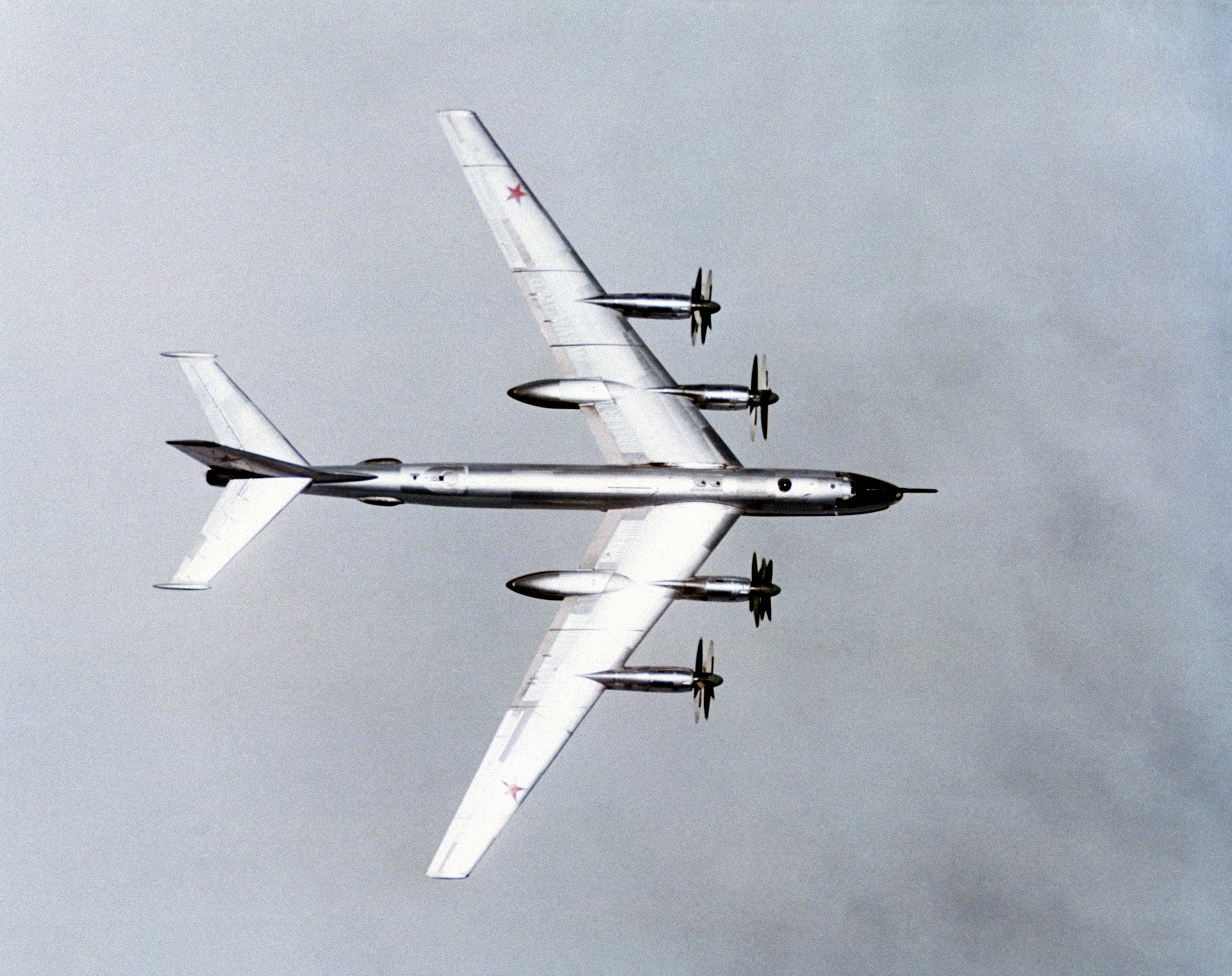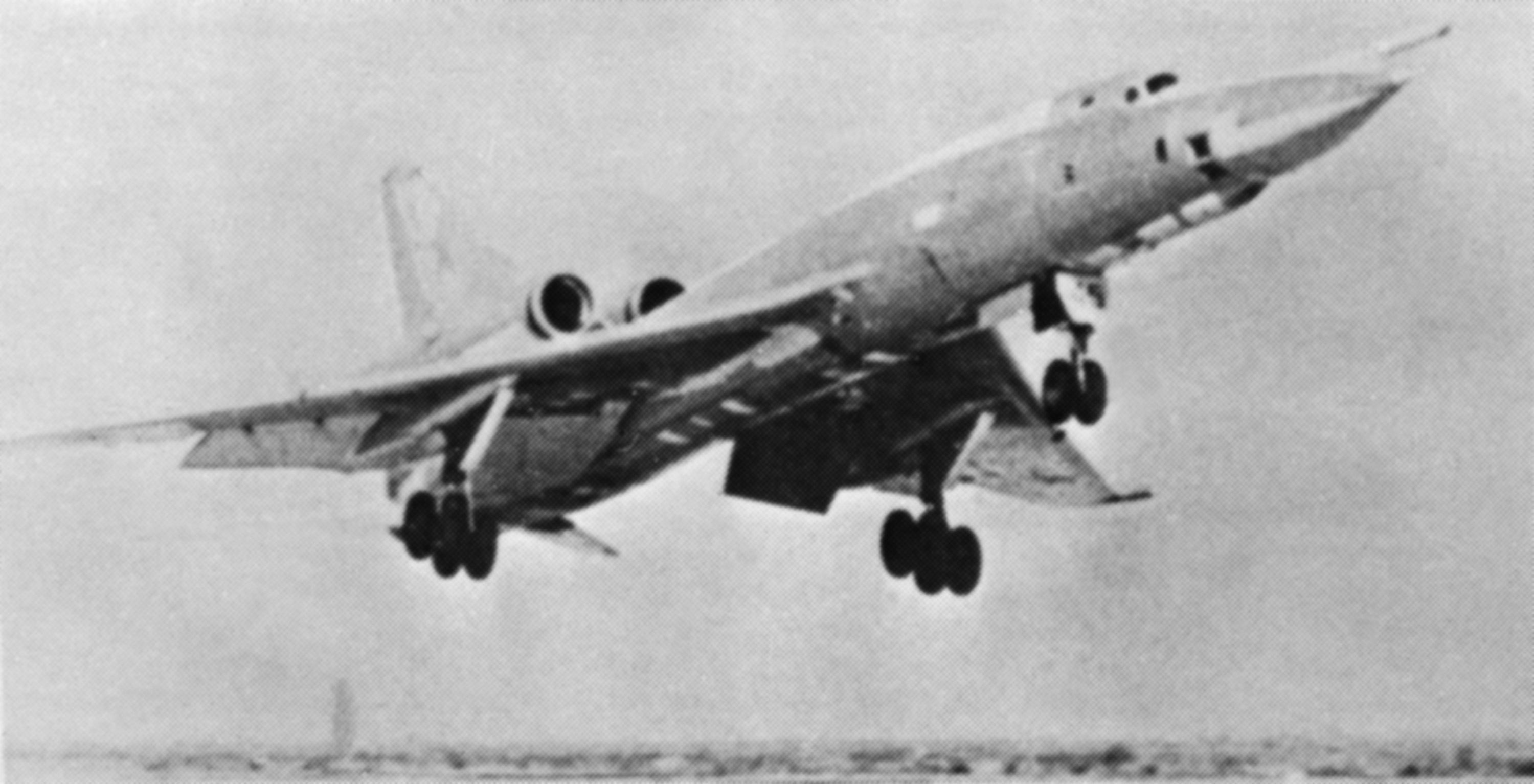|
Kuznetsov NK-6
The Kuznetsov NK-6 was a low-bypass afterburning turbofan engine, designed by the Kuznetsov Design Bureau. Development Development of the NK-6 started in 1955 at the Kuznetsov Design Bureau. It was the first afterburning by-pass engine made in the Soviet Union. With a maximum thrust of , it was the most powerful jet engine in the world in the early 1960s. Despite this fact, development of the NK-6 was halted in July 1963. The accumulated experience of the NK-6 project was subsequently used in the development of the NK-144. A modified version of this engine, the NK-7, was intended for the Soviet Navy and had a takeoff thrust of . Applications * Project "106" (proposed) * Tupolev Tu-95LL (testbed) * Tupolev Tu-123 The Tupolev Tu-123 Yastreb (Hawk, russian: Ястреб) was one of the earliest Soviet reconnaissance drones that began development in 1960. Sometimes referred to as the "DBR-1", it was introduced into active service in 1964. Design The Tu-12 ... (proposed) ... [...More Info...] [...Related Items...] OR: [Wikipedia] [Google] [Baidu] |
Turbofan
The turbofan or fanjet is a type of airbreathing jet engine that is widely used in aircraft propulsion. The word "turbofan" is a portmanteau of "turbine" and "fan": the ''turbo'' portion refers to a gas turbine engine which achieves mechanical energy from combustion, and the ''fan'', a ducted fan that uses the mechanical energy from the gas turbine to force air rearwards. Thus, whereas all the air taken in by a turbojet passes through the combustion chamber and turbines, in a turbofan some of that air bypasses these components. A turbofan thus can be thought of as a turbojet being used to drive a ducted fan, with both of these contributing to the thrust. The ratio of the mass-flow of air bypassing the engine core to the mass-flow of air passing through the core is referred to as the bypass ratio. The engine produces thrust through a combination of these two portions working together; engines that use more jet thrust relative to fan thrust are known as ''low-bypass turbofans' ... [...More Info...] [...Related Items...] OR: [Wikipedia] [Google] [Baidu] |
Tupolev Tu-123
The Tupolev Tu-123 Yastreb (Hawk, russian: Ястреб) was one of the earliest Soviet reconnaissance drones that began development in 1960. Sometimes referred to as the "DBR-1", it was introduced into active service in 1964. Design The Tu-123 was a long-range, high-altitude supersonic strategic unmanned reconnaissance aircraft, in a form reminiscent of a big dart, conceptually somewhat similar to the United States' D-21. It carried both film cameras and SIGINT payloads. The Tu-123 was ground-launched with JATO boosting and powered by a KR-15 afterburning turbojet in flight. The KR-15 was a lower-cost, short-life, expendable version of the R-15 engine used on the twin-engine, Mach 3-class Mikoyan-Gurevich MiG-25 Foxbat interceptor. The Tu-123 itself was expendable, parachuting its payload to the ground for recovery. History Development The Tu-123 was a development of the proposed Tupolev Tu-121 supersonic nuclear-armed cruise missile program. After the cancellation ... [...More Info...] [...Related Items...] OR: [Wikipedia] [Google] [Baidu] |
Kuznetsov NK-22
The Kuznetsov NK-22 is an afterburning turbofan engine, designed by the Kuznetsov Design Bureau. Development In April 1967, the Kuznetsov Design Bureau accepted an official request to create a new engine that would later be designated as the NK-22. The design of the NK-22 was based on the NK-144 engine used on the Tupolev Tu-144 The Tupolev Tu-144 (russian: Tyполев Ту-144; NATO reporting name: Charger) is a Soviet supersonic passenger airliner designed by Tupolev in operation from 1968 to 1999. The Tu-144 was the world's first commercial supersonic transport ai ... SST. The first specimen of the engine was completed on April 10, 1968 and the first factory tests where passed in the same month. State tests took place in October 1970. The engines where later installed on Tu-22M0, M1 and M2 bombers. Serial production of the NK-22 started in 1969 and was terminated in 1984. A modernised version of the NK-22, the NK-23, first ran in July 1976 and was tested in flight o ... [...More Info...] [...Related Items...] OR: [Wikipedia] [Google] [Baidu] |
List Of Aircraft Engines
This is an alphabetical list of aircraft engines by manufacturer. 0–9 2si *2si 215 *2si 230 * 2si 430 *2si 460 *2si 500 * 2si 540 * 2si 690 3W ''Source: RMV'' *3W 106iB2 *3W-110 *3W-112 *3W-170 *3W-210 *3W-220 A Abadal (Francisco Serramalera Abadal) *Abadal Y-12 350/400 hp ABC ''Source: Lumsden.'' * ABC 8 hp * ABC 30hp V-4 * ABC 45hp V-6 * ABC 60hp V-8 * ABC 85hp V-6 * ABC 100hp V-8 * ABC 115 hp * ABC 170hp V-12 * ABC 225hp V-16 * ABC Dragonfly *ABC Gadfly * ABC Gnat * ABC Hornet * ABC Mosquito * ABC Scorpion * ABC Wasp *ABC type 10 APU *ABC type 11 APU ABECO ''Source: RMV'' *ABECO GEM Aberg ''Source: RMV'' *Type Sklenar ABLE ''Source: RMV'', Able Experimental Aircraft Engine Co. (Able Experimental Aircraft Engine Co., Altimizer, Hoverhawk (US)) *ABLE 2275 *ABLE 2500 *ABLE VW x 2 Geared Drive Accurate Automation Corp *Accurate Automation AT-1500 *Accurate Automation AT-1700 Ace (Ace American Engr Corp, Horace Keane Aeroplane Co, North ... [...More Info...] [...Related Items...] OR: [Wikipedia] [Google] [Baidu] |
WikiProject Aircraft
A WikiProject, or Wikiproject, is a Wikimedia movement affinity group for contributors with shared goals. WikiProjects are prevalent within the largest wiki, Wikipedia, and exist to varying degrees within Wikimedia project, sister projects such as Wiktionary, Wikiquote, Wikidata, and Wikisource. They also exist in different languages, and translation of articles is a form of their collaboration. During the COVID-19 pandemic, CBS News noted the role of Wikipedia's WikiProject Medicine in maintaining the accuracy of articles related to the disease. Another WikiProject that has drawn attention is WikiProject Women Scientists, which was profiled by ''Smithsonian Magazine, Smithsonian'' for its efforts to improve coverage of women scientists which the profile noted had "helped increase the number of female scientists on Wikipedia from around 1,600 to over 5,000". On Wikipedia Some Wikipedia WikiProjects are substantial enough to engage in cooperative activities with outside organization ... [...More Info...] [...Related Items...] OR: [Wikipedia] [Google] [Baidu] |
Tupolev Samolyot 135
The Tupolev Samolyot 135 was a designation that was used for two different strategic bomber projects in the Soviet Union in the late 1950s and early 1960s, neither of which progressed beyond the drawing board. Design and development The first, proposed in 1958, was for a Tupolev Tu-95 derivative carrying a long-range cruise-missile, to be based on the Tsybin RS (S-30), Tupolev Samolyot 100 or Tupolev Samolyot 113 missiles. The combination was estimated to have a total range of approximately . Two years later the second iteration of '135' was envisioned as a supersonic interdiction bomber powered by a variety of engines in many configurations, including as a nuclear-powered bomber. The design settled to a canard delta, similar to the North American XB-70A Valkyrie, with paired Kuznetsov NK-6 turbofan engine nacelles under each wing and a large single fin. Weapons would largely have been missiles, as designed, for maritime interdiction as well as long-range interdiction of en ... [...More Info...] [...Related Items...] OR: [Wikipedia] [Google] [Baidu] |
Tupolev Tu-125
The Tupolev Tu-125 was an unrealized project to develop a new long-range supersonic bomber for the Soviet Air Force. Development commenced in 1958 to replace the newest Tu-22. The "Tu-125" designation was an internal one used by the Tupolev design bureau. Since the aircraft was never built, it never received a military designation. A canard design was chosen for the aircraft, featuring a delta planform for the wing and stabilizer. Two turbojets ( Kuznetsov NK-6 or NK-10 (230–240 kN)) were to be installed in nacelles under the wings. A four-turbojet version, powered by Tumansky R-15B-300s in two nacelles also was considered. The fuselage and wings made from titanium and aluminium alloys. In September 1962 Events January * January 1 – Western Samoa becomes independent from New Zealand. * January 3 – Pope John XXIII excommunicates Fidel Castro for preaching communism. * January 8 – Harmelen train disaster: 93 die in the wor ..., the Soviet Air F ... [...More Info...] [...Related Items...] OR: [Wikipedia] [Google] [Baidu] |
Tupolev Tu-95
The Tupolev Tu-95 (russian: Туполев Ту-95; NATO reporting name: "Bear") is a large, four-engine turboprop-powered strategic bomber and missile platform. First flown in 1952, the Tu-95 entered service with the Long-Range Aviation of the Soviet Air Forces in 1956 and was first used in combat in 2015. It is expected to serve the Russian Aerospace Forces until at least 2040. A development of the bomber for maritime patrol is designated the Tu-142, while a passenger airliner derivative was called the Tu-114. The aircraft has four Kuznetsov NK-12 engines with contra-rotating propellers. It is the only propeller-powered strategic bomber still in operational use today. The Tu-95 is one of the loudest military aircraft, particularly because the tips of the propeller blades move faster than the speed of sound. Its distinctive swept-back wings are set at an angle of 35°. The Tu-95 is the only propeller-driven aircraft with swept wings that has been built in large numbers. ... [...More Info...] [...Related Items...] OR: [Wikipedia] [Google] [Baidu] |
Soviet Union
The Soviet Union,. officially the Union of Soviet Socialist Republics. (USSR),. was a List of former transcontinental countries#Since 1700, transcontinental country that spanned much of Eurasia from 1922 to 1991. A flagship communist state, it was nominally a Federation, federal union of Republics of the Soviet Union, fifteen national republics; in practice, both Government of the Soviet Union, its government and Economy of the Soviet Union, its economy were highly Soviet-type economic planning, centralized until its final years. It was a one-party state governed by the Communist Party of the Soviet Union, with the city of Moscow serving as its capital as well as that of its largest and most populous republic: the Russian Soviet Federative Socialist Republic, Russian SFSR. Other major cities included Saint Petersburg, Leningrad (Russian SFSR), Kyiv, Kiev (Ukrainian Soviet Socialist Republic, Ukrainian SSR), Minsk (Byelorussian Soviet Socialist Republic, Byelorussian SSR), Tas ... [...More Info...] [...Related Items...] OR: [Wikipedia] [Google] [Baidu] |
Tupolev Tu-22
The Tupolev Tu-22 (NATO reporting name: Blinder) was the first supersonic bomber to enter production in the Soviet Union. Manufactured by Tupolev, the Tu-22 entered service with the Soviet military in the 1960s. The aircraft was a disappointment, lacking both the speed and range that had been expected. It was also a difficult design to fly and maintain. It was produced in small numbers, especially compared to the Tupolev Tu-16 it was designed to replace. The aircraft was later adapted for other roles, notably as the Tu-22R reconnaissance aircraft and as carriers for the long-range Kh-22 antiship missile. Tu-22s were sold to other nations, including Libya and Iraq. The Tu-22 was one of the few Soviet jet bombers to see combat: Libyan Tu-22s were used against Tanzania and Chad, and Iraqi Tu-22s were used during the Iran–Iraq War. Development Previous efforts In the immediate postwar era, the Soviet aircraft establishment was repeatedly upset by Joseph Stalin, who chose ... [...More Info...] [...Related Items...] OR: [Wikipedia] [Google] [Baidu] |



